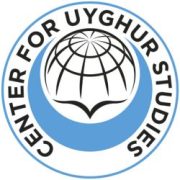As China strives to achieve complete and utter global economic domination, the resources found within East Turkistan are a necessity to their success.
East Turkistan consists of two basins: the Junggar Basin in the north,and the Tarim Basin in the south. Within these basins are an abundance of natural resources that are the key to being a competitive presence in the global market. In the north, the Junggar Basin, also known as the Dzungarian Basin, provides oil, coal, and ore. In the south, the Tarim Basin is rich with petroleum, carbon, and other natural gases. As of 2015, the region is estimated to hold 21 billion tons of oil reserves, a 1/5 of China’s total, and is estimated to provide more than 20% of China’s overall energy reserves. East Turkistan is also the world’s largest cotton exporter, providing over 80% of China’s cotton, and over a quarter of the global cotton export.
Additionally, the region’s location in Central Asia provides China with a doorway into the Middle East. In the past, this key location made the area an important landmark on the Silk Road, since it served as the buffer between the West and the East. Today, East Turkistan plays the same role within China’s Belt and Road Initiative.
Combined with growing climate change, the industrial developments in East Turkistan as perpetrated by China has led to growing water scarcity in an area that had long struggled with it. Groundwater is being heavily exploited to continue expanding East Turkistan’s agricultural industry and mining output, without consideration for the long-term impacts. Since the region’s industrialization, desertification has sharply increased.
Although China claims that its mining is doing more good than harm by providing important resources and jobs to the region, jobs still heavily prioritize the Han, and exclude Uyghurs, Kazakhs, and Kyrgyz.
Copyright Center for Uyghur Studies - All Rights Reserved
